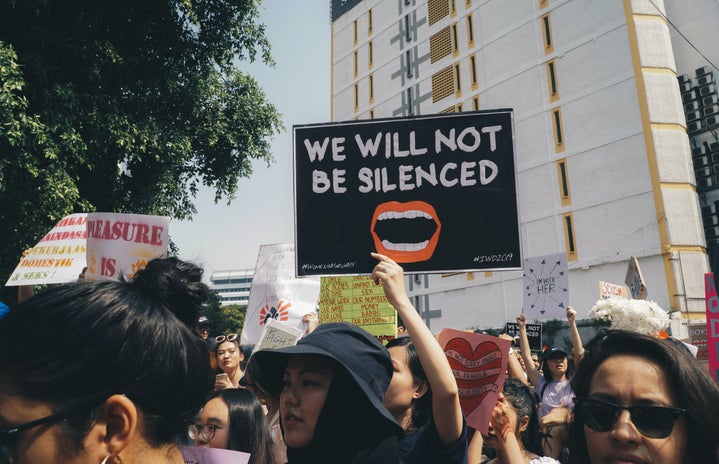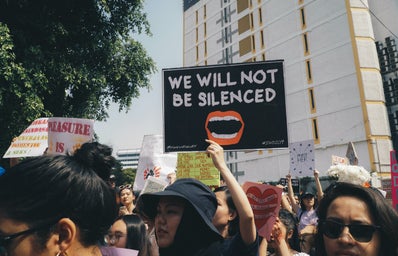Human rights are defined as moral principles or norms for certain standards of human behavior and are regularly protected in municipal and international law. More simply, human rights are the basic rights and freedoms that belong to every person in the world, from birth until death. These basic rights are based on shared values like dignity, fairness, equality, respect, and independence. These values are defined and protected by law so that an individual’s dignity is not threatened by anyone or anything at any point in time. The above definition seems devilishly rosy, inclusive, and panacea. But is it? We witness human rights violations at every step, every day. It is as if some human rights are more exigent, more urgent than others. Human rights are of supreme importance to anyone’s existence, perhaps that’s why, in a desperate attempt to secure one’s rights, people tend to undermine those of others, especially in areas withstanding wars or conflicts.
For decades, leaders and politicians of all states have cited the UDHR 1948 blindly, which stands for Universal Declaration of Human Rights, and is a repository of 30 articles that state and expound human rights. However, in areas enduring conflict, not one, but all human rights are grossly violated. We must look at human rights violations as both cause and implication of wars and conflicts. Violations of political and economic rights are the root causes of many crises. When rights to adequate food, housing, employment, and cultural life are denied, and large groups of people are excluded from society’s decision-making processes, due to either social or theological intolerance, there is likely to be great social unrest. Such conditions often give rise to justice conflicts, in which parties demand that their basic needs be met. Indeed, many armed conflicts are sparked or spread by the violation of human rights. For example, massacres or torture may inflame hatred and strengthen an adversary’s determination to continue fighting. Violations may also lead to further violence from the other side and can contribute to an armed conflict’s spiraling out of control which is extremely precarious for a nation’s health.
The number of deaths related to combat and the collateral damage caused by warfare is only a small part of the tremendous amount of suffering, devastation, and violations caused by conflicts. Over the course of protracted armed conflict, assaults on political rights and the fundamental right to life are typically widespread. Some of the gravest violations of the right to life are massacres, the starvation of entire populations, and genocide. Other war crimes include taking hostages, firing on localities that are undefended and without military significance, such as hospitals or schools, inhuman treatment of prisoners, including biological experiments, and the pillage or purposeless destruction of property. Although clearly outlawed by international law, such war crimes are common. Armed conflict often leads to the breakdown of infrastructure and civic institutions, which in turn undermines a broad range of rights of people. When hospitals and schools are closed or destroyed, the basic rights to adequate health and education are threatened. The collapse of economic infrastructure often results in pollution, food shortages, and overall poverty. These various forms of economic breakdown and oppression violate rights to self-determination and often contribute to further human tragedy in the form of sickness, starvation, and lack of basic shelter.
For a long time, the international community has failed to address the problem of sexual violence during armed conflict. However, sexual assaults, which often involve sexual mutilation, sexual humiliation, and forced pregnancy, are quite common. Such crimes are motivated in part by the long-held view that women are the “spoils” of war to which soldiers are entitled. Trafficking of women is a form of sexual slavery in which women are transported across national borders and marketed for prostitution. The solution to this problem lies in the propagation of ‘positive peace’. Yes, positive and negative peace are two very different concepts that come under the banner of peace but aren’t talked about very frequently. Galtung says that negative peace is solely the absence of war. Whereas positive peace is the presence of social justice and equality, and the absence of structural or indirect violence. It is characterized by the presence of harmonious social relations and the “integration of human society”.
A state needs to have stable negative peace to achieve positive peace. For that to happen, a state must thrive to avoid conflict at all costs and introduce justice mechanisms including transitional justice, providing increased accountability for conflict-related violations and must protect and expand the civil space. Any offender must be punished. There must be less expenditure on the military sector and more on the social sector. Any government’s priority must be to provide its people with quality healthcare, education, nutrition, and shelter above anything and everything else.


